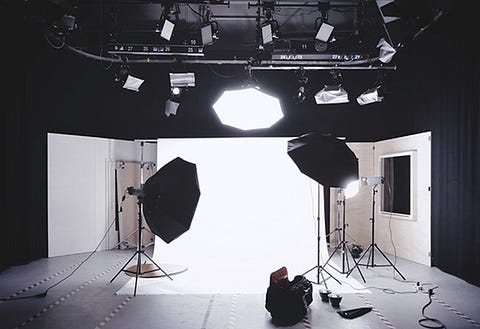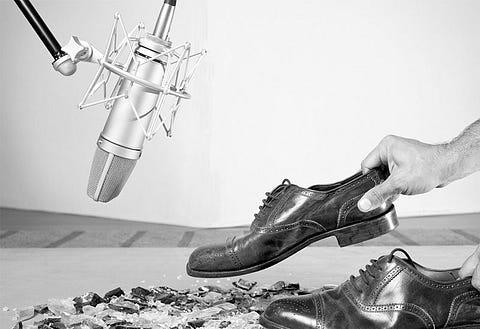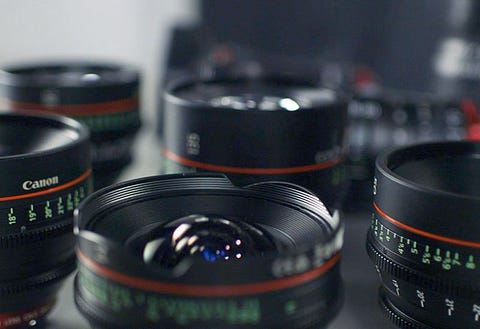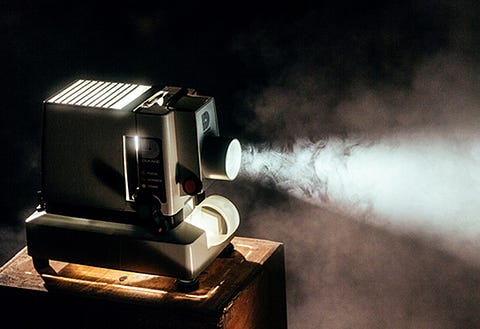
The door squeaking in a horror film is responsible for creating a sense of fear in a scene, the powerful ‘dishoom’ with every punch in an action scene is what adds to the excitement of a fight. Ever wondered how these scenes will lose all impact without that sound effect? Imagine a punch falling flat on the enemy’s face without a sound or a man falling 10 feet away on the ground without a thud? Films may be visual mediums, but without effective sounds, even the greatest of visuals tend to fall short.
In comes the role of a Foley Artist.Foley is a technique used in filmmaking that involves creating everyday sound effects for films and television shows. Rather than picking up sounds from a sound bank, a Foley Artist creates these sounds in real-time and in sync with the film scenes. Just the way actors dub for their sound after filming, Foley Artists look at the film on the screen and then create the required sounds to give it that extra impact. Most films use a combination of actual shoot recording and foley effects. Jack Foley, the Sound Effect Artist, who developed and shaped this technique didn’t get much recognition back then, but today this technique is named after him.
3 Types of Foley Sounds used in filmmaking:Footsteps:
One of the most popular uses of Foley Sounds comes in recreating the sound of footsteps. The natural sound recorded during a shoot is usually too soft to create an impact on the screen, and thus a Foley Artist must recreate it in the Studio. Before creating the sound of footsteps, the Foley Artists, bears in mind the kind of shoes a character is wearing and keeps in mind their weight, speed at which they are walking or running and on what surface. Basis these facts the Foley Artists use diverse types of shoes and heels on small surface areas in recording studios to recreate the sound of a character’s footsteps. They keep multiple patches of surface areas with them like grass, wooden board, etc. in order to replicate the similar kind of sound effect.
Movements:
Movement sounds like two people brushing against each other, a person pulling a chair or shifting in their seat are common movement sounds created by Foley Artists.
Props or Specifics:
Sounds that are usually created by some action on the scene are called prop sounds. They can recreate anything right from the sound of the woods, rustling of leaves to the breaking of bones — their world is full of endless possibilities. For creating these sounds, different props are used by Foley Artists. Prop sounds can mimic sounds that happen in the real or fantasy world, and sometimes layering of several recorded sounds is used as a technique to recreate realistic or magnified sounds. Commonly used prop sounds include wooden logs to break open doors, empty coconut shells worn as gloves to emulate a horse’s gallop and to imitate a character swimming, a makeshift bathtub filled with water is used, where Foley Artists use their hands to splash the water and create a relatable sound.
Do you know how Foley Sounds are made?
Foley Artists first watch the film and take note of what sounds they would need to make, and the props required to create those sounds. They then collect the material for each scene from a studio warehouse or storage zone. They break glasses, stomp their feet, bang utensils, cling objects together and produce sounds that are clearer than the real-time sounds recorded during shooting, and sometimes create new sounds all together to enhance the impact of a scene! Once they assemble their props, they watch the production again and perform actions along with it to recreate an impactful version of the sound, thus validating it towards being a match. There is a fair bit of creativity required in developing Foley Sounds, with some of the most common sounds being produced in rather unusual ways — Flapping a leather wallet replicates the sounds of a bird fluttering its wings, the sound for heavy rainfall is recreated by dropping large granules of salt over an umbrella.
3 Ways Foley Artists bring life to a film:Makes your film-watching experience more immersive-
Imagine if you see a horse running but don’t hear the sound its hooves are making against the ground. How unreal would the scene seem? Or, if King Kong went about breaking glass buildings and you didn’t hear the impact of it? Sounds produced by Foley Artists add life to a scene and make the film-watching experience even more enjoyable. For example, in Sholay (1975) before the start of the song ‘Jab tak hai jaan’, Hema Malini is shown dancing on shards of glass. When the film was re-released in 3D in 2014, the Foley Artists recreated the sound by moving their hands encased in leather gloves over broken glass bottles in rhythm with her dance.
Makes a scene look more real-
Our real-life, even in the most silent moments has some sounds. And a good Foley Artist is the one that creates sounds that are so real and authentic that the audience doesn’t even notice them. During emotional scenes for instance, the foley artist use their own sobbing sounds to make a crying scene look more real on the screen.
Makes actions look more impactful-
Action scenes need a lot of recreated sound effects. The recorded sounds during the shooting of the scene are neither real nor impactful. Also because of a lot of background noises, the sound of the action loses its impact. Hence, Foley Sounds play a crucial role in giving action scenes their power and impact. A punch placed on a piece of meat is used for mocking the sound of a punch being planted on a man’s cheek. This combined with, stomping an apple under the foot, gives a more impactful feel of someone’s cheek being smashed hard.
Reference Links:
www.nfi.edu/foley-artist
www.sound-ideas.com/Page/what-is-foley
www.studiobinder.com/blog/what-is-a-foley-artist
www.nfi.edu/foley-artist
www.sound-ideas.com/Page/what-is-foley
www.studiobinder.com/blog/what-is-a-foley-artist


